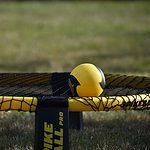In the world of sports facilities, pickleball courts are often likened to hidden gems awaiting discovery. But are these courts truly a pot of gold waiting to be unearthed? Before you dismiss the idea, consider this: the profitability of pickleball courts is a topic that delves into various financial aspects that may surprise you.
Are these courts just a hobbyist's dream or a savvy entrepreneur's gold mine? Let's explore the financial intricacies that could make or break the profitability of these courts.
Key Takeaways
- Diversifying revenue sources beyond memberships and court rentals enhances profitability.
- Leveraging sponsorships, equipment sales, and events boosts earnings effectively.
- Analyzing expenses and monitoring operational costs is crucial for financial sustainability.
- Implementing effective marketing strategies tailored to engage enthusiasts for cost-effective promotions is essential.
Financial Viability of Pickleball Courts

The financial viability of pickleball courts is dependent on a strategic blend of revenue sources, including membership fees, court rentals, lessons, events, and additional services. Pickleball's increasing popularity plays a crucial role in attracting players and enthusiasts, contributing to the revenue streams of courts. Organizing tournaments and events at these facilities can be a significant source of income through entry fees, sponsorships, and merchandise sales. Additionally, offering pro shop sales and food & beverage options can further enhance profitability by meeting the diverse needs and preferences of players.
Community engagement and strategic marketing are vital components for the success of pickleball courts. By actively involving the community and implementing effective marketing strategies, these facilities can maximize profitability and ensure long-term sustainability. Courts that are well-managed, promote player interaction, and cater to the demands of their customer base are more likely to thrive in the competitive sports market. Thus, a holistic approach to revenue generation, combined with a focus on community involvement and marketing, is essential for the financial success of pickleball courts.
Revenue Streams for Pickleball Facilities
To sustain profitability, pickleball facilities must strategically diversify their revenue streams beyond traditional sources such as membership fees and court rentals. Diversifying revenue streams can help facilities tap into various financial opportunities within the local community. Hosting events like tournaments and leagues not only attract players but also bring in additional revenue through entry fees and spectator attendance. Furthermore, offering lessons and clinics can cater to players looking to improve their skills, thereby creating an additional income stream.
In addition to player-related revenue, facilities can boost their earnings by selling pickleball equipment, apparel, and accessories through a pro shop. This not only enhances the player experience but also increases the facility's profitability. Moreover, leveraging sponsorships from local businesses or brands can provide vital financial support. Food and beverage sales at the facility can also contribute significantly to the revenue. By exploring these diverse revenue streams, pickleball facilities can ensure a more stable and prosperous financial outlook.
Cost Considerations for Court Operations

Considering the various cost components involved in court operations, it's crucial to meticulously analyze each expense to ensure efficient financial management. Court maintenance costs encompass resurfacing, painting, net replacement, and general upkeep, all vital for providing a safe and enjoyable playing surface.
Energy costs, including lighting, heating or cooling, and other utilities, significantly impact operational expenses and should be carefully monitored to optimize usage. Staffing costs for court management, supervision, and customer service are essential for maintaining a well-run facility but can also be a significant portion of the budget.
Equipment costs for paddles, balls, nets, and other playing essentials shouldn't be overlooked when calculating expenses. Additionally, insurance expenses for liability coverage and property protection are crucial considerations to protect both the business and players.
Factors Impacting Pickleball Court Profitability
Moving from cost considerations to factors impacting pickleball court profitability entails a shift towards assessing the dynamic influences that directly affect the financial success of these facilities. When analyzing the profitability of pickleball courts, several key factors come into play:
- Monthly or Annual Memberships: Implementing membership models can provide a steady stream of income and foster a sense of community among players.
- Partnering with Local Businesses: Collaborating with local companies for sponsorships or promotions can open up new revenue streams and increase visibility within the pickleball community.
- Offering Coaching Services: Providing coaching sessions can attract players looking to improve their skills, generating additional income while enhancing the overall player experience.
Marketing Strategies for Court Success

Maximizing the reach of your pickleball courts requires strategic marketing efforts tailored to engage with enthusiasts and expand your customer base.
To attract pickleball players, consider partnering with local businesses, sports clubs, and community centers to promote court availability. Utilize social media platforms for targeted marketing campaigns, reaching out to specific demographics interested in pickleball. Offering referral discounts and loyalty programs can incentivize repeat business and word-of-mouth marketing, helping generate revenue. Moreover, advertising in local sports publications, newsletters, and online forums can increase visibility and attract new players to your courts.
Hosting pickleball events, participating in community sports fairs, and tournaments are excellent ways to showcase your facilities and engage with potential customers. By implementing these strategies and ensuring your courts are an optimal size for gameplay, you can create multiple revenue streams and increase your chances of making money in the pickleball court business.
Risk Assessment in Pickleball Court Business
Assessing market demand and competition is crucial for evaluating the profitability of a pickleball court business. When delving into the risk assessment of such a venture, factors like location, facility management, and operational costs play significant roles in determining success.
To mitigate risks effectively and enhance profitability, it's essential to consider the following points:
- Conduct a comprehensive feasibility study to understand the market demand and competition landscape thoroughly.
- Identify potential revenue streams, including memberships, court rentals, events, and lessons, to gauge financial sustainability.
- Implement a robust risk management strategy that addresses challenges proactively and fosters a competitive edge in the market.





